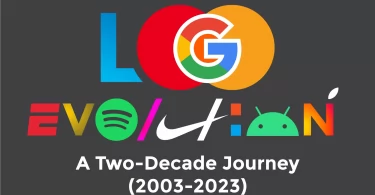You’ve all been there, sitting through a boring presentation at work or an event. The language on the slides is dense, and the presenter feels forced to read every single word. There are sufficient graphs, charts, and formulas to fill a trigonometry textbook, and each screen is drenched in the most vibrant hues conceivable.
The lists become longer as the presentation progresses. Sadly, everyone in the crowd is eager for it to end.
Presentations are a significant commercial potential that has been squandered, and you may be contributing to the problem. No, it’s not your responsibility if a presenter is unprepared or uninterested, but you’ve failed if you treat your customers’ presentations like fancy lists.
Presentations, after all, are narratives, not lists, and narratives have a framework.
They build up to an impact moment and then release a surge of momentum that alters people’s perspectives and assumptions. Effective tales, like good presentations, aren’t dull.
Making and delivering outstanding presentations is an art form. That is why, in this article, we will talk about how to perfect that art and make interesting presentations.
The Art of Making Interesting Presentations
Here’s how you can master the art of making presentations.
- Plan before you start
- Establish credibility
- Create an intriguing structure
- Avoid making text-heavy slides
- Use minimum transitions
Read on to learn in detail.
1. Plan before you start
When you deliver a presentation, you tell a tale with one or two objectives. You are attempting to enlighten the audience on something you know they are unaware of, or you are trying to persuade the audience to embrace our point of view or a mix of the two.
You must first determine the beginning, middle, and finish of the tale that will achieve our objectives, and then use the presentation to convey the story.
Along with that, it is important to thoroughly plan your pitch. A random, wild idea will only take you so far.
If you are facing difficulties creating a strong pitch, you can use these free templates by Pitch. You will easily find a relevant pitch from among hundreds of templates and create a powerful presentation to swoon your potential clients and customers.
The presenter provides a viewpoint that the facts cannot convey on their own. A presentation should not consist only of data dumps. It should have an effective pitch, an opening, and also a closing.
If your only purpose is to give data, you should cancel the presentation and simply send out the data.
2. Establish credibility
You immediately judge whether or not someone is trustworthy within the first few seconds of meeting them.
Your logo is not enough to offer credibility.
Presenters are usually given an initial amount of trust since they are regarded as competent in speaking in front of a large number of people. However, if confidence is not established within the first minutes of a presentation, it may be lost in an instant.
Deloitte serves as a worldwide financial consultant to about 90% of all Fortune 500 corporations. Naturally, they recognize the need to immediately establish a reputation. The slide used in the preceding example is slide number five in a thirty-slide deck. Deloitte demonstrates its expertise on the subject right away, essentially stating, “We’ve been doing this for a while.”
Adding a slide like this to a client’s deck may enhance their confidence by allowing them to establish expert status immediately. Establishing trustworthiness also aids audience relaxation and engagement with the material being presented.
3. Create an intriguing structure
Break down everything you’re going to say into three sections: an opening, a body, and a conclusion for your presentation.
- A compelling introduction: You must deliver what your presentation is about and how it will benefit your audience, right at the beginning.
- Present evidence: All through the presentation, your essential points must be backed with facts, quotes, and evidence.
- Sum up major points: The closing is when you revisit your original point and give the viewers some key pointers on how to apply what they’ve learned.
- Keep it to 10 slides: No one wants to sit through a long presentation, viewing slide after slide. The audience is more interested in the matter rather than the number of slides.
It doesn’t matter whether your presentation lasts 30 minutes or 1 hour. As long as you keep it to a maximum of 11 slides, your audience will readily digest the content in sync with your speech. Making idea maps prior to organizing your presentations may help you remain on target.
4. Avoid making text-heavy slides
Projected slides are an excellent medium for graphically representing a concept or offering an overview. Slides are an inadequate medium for providing detail and reading. Avoid using paragraphs, quotes, and even full phrases.
Your arguments should not be more than 5 or 6 lines. Also, keep the arguments short and express them with phrases and words. Key topics that will be easier to consume and keep for the audience.
Use your slides for more than just speaker notes or to portray an outline of your presentation.
5. Use minimum transitions
You might think that sound effects and transitions are a game changer and make you the center of attention. Yet, that’s far from true.
Worst case scenario, you might have made the presentation on a faster computer and it might be watched on one that is far slower. The result?
A laughable and sluggish presentation.
You must understand that transitions rarely add value to your work.
A laser-guided text may look good for a science presentation but is not good for business proposals and conferences. Therefore, it is important that you concentrate on the content of the presentation rather than on the technology. Transitions might even draw the audiences’ attention away from the presentation itself.
Conclusion
That’s a wrap for this article. Hopefully, the tips mentioned in this article will help you create a powerful and compelling presentation for your next client meeting. Remember, presentations are probably the best way to get your idea out there to your potential clients. An ineffective one will equal a lost opportunity. So, pull up your socks and start mastering the art of making presentations today.
Subscribe to our Newsletter!




